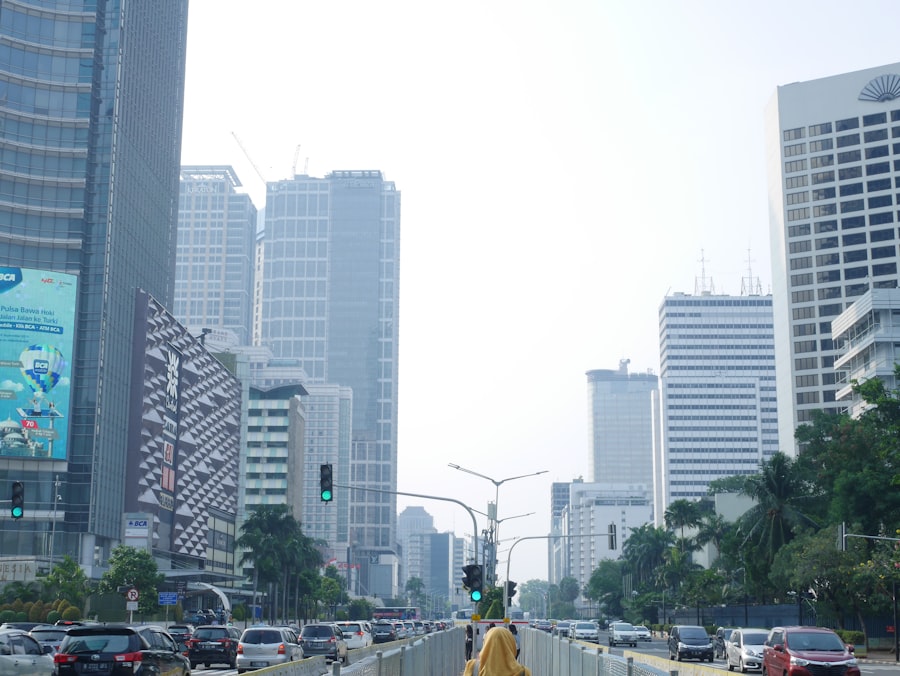Economic stabilization is a critical concept that plays a vital role in maintaining the health of a nation’s economy.
These fluctuations can arise from various factors, including market volatility, global events, and shifts in consumer behavior.
Understanding the mechanisms behind economic stabilization can empower you to appreciate the intricate balance that governments and institutions strive to achieve in fostering a stable economic environment. At its core, economic stabilization involves implementing strategies that aim to smooth out the peaks and troughs of economic cycles. This can include measures to control inflation, reduce unemployment, and stimulate growth during downturns.
As you delve deeper into this topic, you will discover that both monetary and fiscal policies play significant roles in these stabilization efforts. By exploring the various tools available to policymakers, you can gain insight into how they work to create a more resilient economy that can withstand shocks and promote sustainable growth.
Key Takeaways
- Economic stabilization is essential for maintaining a healthy economy and preventing financial crises.
- Government stimulus packages can help boost consumer spending and business investment during economic downturns.
- Monetary policy, such as interest rate adjustments, can influence the money supply and inflation rates.
- Fiscal policy, including government spending and taxation, can be used to stimulate economic growth and stabilize the economy.
- Infrastructure investment, job creation initiatives, and small business support are crucial for promoting economic growth and stability.
Government Stimulus Packages
Government stimulus packages are one of the most direct ways that authorities respond to economic downturns. When you consider the impact of a recession or a significant economic disruption, it becomes clear that swift action is often necessary to prevent further decline. Stimulus packages typically involve large-scale government spending aimed at boosting demand, creating jobs, and revitalizing industries that may be struggling.
You might find it interesting to note how these packages can take various forms, including direct payments to citizens, tax cuts, and increased funding for public services. The effectiveness of stimulus packages often hinges on their design and implementation. For instance, when you look at historical examples, such as the American Recovery and Reinvestment Act of 2009, you can see how targeted investments in infrastructure and renewable energy not only provided immediate relief but also laid the groundwork for long-term economic growth.
However, it’s essential to recognize that while stimulus packages can provide a much-needed boost, they also come with challenges, such as potential increases in national debt and inflationary pressures. As you explore this topic further, consider how different countries have approached stimulus measures and the varying outcomes they have experienced.
Monetary Policy

Monetary policy is another crucial tool in the arsenal of economic stabilization. As you learn about this aspect of economics, you will discover that it primarily involves the management of a nation’s money supply and interest rates by its central bank. The goal of monetary policy is to influence economic activity by making borrowing cheaper or more expensive, thereby affecting consumer spending and investment.
When you think about how central banks respond to economic conditions, you might consider how they adjust interest rates to either stimulate growth during a recession or cool down an overheating economy. One of the most notable examples of monetary policy in action is quantitative easing, a strategy employed by central banks during times of crisis. By purchasing government securities and other financial assets, central banks inject liquidity into the economy, encouraging lending and investment.
As you reflect on this approach, it’s important to weigh its benefits against potential risks, such as asset bubbles or income inequality. Understanding the nuances of monetary policy will equip you with a deeper appreciation for how central banks navigate complex economic landscapes to promote stability.
Fiscal Policy
| Metrics | 2018 | 2019 | 2020 |
|---|---|---|---|
| Government Spending | 3.42 trillion | 3.52 trillion | 3.86 trillion |
| Government Revenue | 3.33 trillion | 3.46 trillion | 3.42 trillion |
| Deficit/Surplus | -0.09 trillion | -0.06 trillion | 0.44 trillion |
Fiscal policy encompasses government spending and taxation decisions that directly impact economic activity. As you explore this area, you will find that fiscal policy can be either expansionary or contractionary, depending on the economic context. During periods of economic downturn, expansionary fiscal policy—characterized by increased government spending and tax cuts—can stimulate demand and encourage growth.
Conversely, contractionary fiscal policy may be employed during times of economic prosperity to rein in inflation and stabilize the economy. You may also want to consider how fiscal policy interacts with other economic factors. For instance, when governments increase spending on social programs or infrastructure projects, they not only create jobs but also enhance overall productivity in the economy.
However, as you examine these policies, it’s crucial to recognize the potential trade-offs involved. Increased government spending can lead to higher deficits and debt levels, which may have long-term implications for economic stability. By understanding the delicate balance between spending and revenue generation, you can appreciate the complexities that policymakers face in crafting effective fiscal strategies.
Infrastructure Investment
Investing in infrastructure is often seen as a cornerstone of economic stabilization efforts. When you think about infrastructure, consider not just roads and bridges but also utilities, public transportation systems, and digital networks that facilitate commerce and communication. By prioritizing infrastructure investment, governments can create jobs in the short term while also laying the foundation for long-term economic growth.
You might find it compelling to explore how well-planned infrastructure projects can enhance productivity by reducing transportation costs and improving access to markets. Moreover, infrastructure investment can have a multiplier effect on the economy. As you delve into this topic, consider how improved infrastructure can attract businesses and stimulate local economies.
For example, when a new highway is built or a public transit system is upgraded, it often leads to increased property values and business opportunities in surrounding areas. However, it’s essential to approach infrastructure investment with a strategic mindset; poorly planned projects can lead to wasted resources and missed opportunities for growth. By examining successful case studies from around the world, you can gain insights into best practices for infrastructure development.
Job Creation Initiatives

Job creation initiatives are vital components of any economic stabilization strategy. As you reflect on the importance of employment in fostering economic resilience, consider how high unemployment rates can lead to decreased consumer spending and increased social unrest. Governments often implement various programs aimed at stimulating job growth during challenging economic times.
These initiatives may include tax incentives for businesses that hire new employees or funding for vocational training programs designed to equip workers with in-demand skills. You might also want to explore how job creation initiatives can be tailored to address specific challenges within different sectors of the economy. For instance, during periods of technological disruption, retraining programs for displaced workers can help them transition into new roles within emerging industries.
Additionally, public-private partnerships can play a significant role in fostering job creation by leveraging resources from both sectors to develop innovative solutions. By understanding the multifaceted nature of job creation initiatives, you can appreciate their critical role in promoting economic stability and growth.
Small Business Support
Small businesses are often considered the backbone of any economy, contributing significantly to job creation and innovation. As you examine the role of small business support in economic stabilization efforts, consider how these enterprises face unique challenges during downturns. Access to capital is often a significant hurdle for small businesses; therefore, government programs aimed at providing loans or grants can be instrumental in helping them weather economic storms.
In addition to financial support, small businesses benefit from resources such as mentorship programs and networking opportunities that can enhance their resilience. You may find it interesting to explore how local governments have implemented initiatives designed specifically for small business development, such as reducing regulatory burdens or offering tax incentives for startups. By fostering an environment conducive to small business growth, policymakers can stimulate local economies and create jobs while promoting innovation and entrepreneurship.
Trade Policies
Trade policies play a crucial role in shaping a nation’s economic landscape and can significantly impact stabilization efforts. As you delve into this topic, consider how trade agreements and tariffs influence domestic industries and employment levels. Open trade policies can lead to increased competition and lower prices for consumers; however, they may also pose challenges for certain sectors that struggle to compete with foreign imports.
You might also want to explore how trade policies can be used strategically during times of economic instability. For instance, governments may implement protective measures such as tariffs or quotas to shield domestic industries from foreign competition during downturns. While these measures can provide short-term relief for struggling sectors, they may also lead to retaliatory actions from trading partners and disrupt global supply chains.
By examining the complexities of trade policies, you can gain insights into how they contribute to overall economic stability.
Healthcare and Social Safety Net Programs
Healthcare and social safety net programs are essential components of a comprehensive approach to economic stabilization. As you consider the impact of health on economic productivity, it becomes clear that access to quality healthcare is vital for maintaining a healthy workforce. During times of economic uncertainty, social safety net programs—such as unemployment benefits and food assistance—provide crucial support for individuals facing financial hardship.
You may find it enlightening to explore how robust healthcare systems can enhance overall economic resilience by reducing absenteeism and improving worker productivity. Additionally, social safety net programs not only help individuals cope with immediate challenges but also contribute to long-term stability by promoting consumer spending during downturns. By investing in healthcare and social safety nets, governments can create a more equitable society while fostering an environment conducive to sustainable economic growth.
Education and Workforce Development
Education and workforce development are fundamental pillars of any successful economic stabilization strategy. As you reflect on the importance of a skilled workforce in driving innovation and productivity, consider how investments in education can yield significant returns for both individuals and society as a whole. By prioritizing education at all levels—from early childhood through higher education—governments can equip citizens with the skills needed to thrive in an ever-evolving job market.
Workforce development initiatives are equally important in ensuring that individuals have access to training programs that align with current industry demands. You might find it interesting to explore how partnerships between educational institutions and businesses can facilitate skill development tailored to specific sectors. By fostering collaboration between academia and industry, policymakers can create pathways for individuals to transition into high-demand jobs while simultaneously addressing labor shortages within key industries.
Long-term Economic Sustainability Measures
Finally, long-term economic sustainability measures are essential for ensuring that stabilization efforts yield lasting benefits for future generations. As you contemplate the importance of sustainability in economic planning, consider how environmental considerations must be integrated into policy decisions. Sustainable practices not only protect natural resources but also promote innovation in green technologies that can drive economic growth.
You may also want to explore how long-term sustainability measures encompass social equity considerations as well. By addressing income inequality and ensuring access to opportunities for all citizens, governments can create more resilient economies capable of withstanding future shocks. As you reflect on these interconnected themes of sustainability, it becomes evident that a holistic approach is necessary for achieving lasting economic stability that benefits both current and future generations.
In conclusion, understanding the multifaceted nature of economic stabilization equips you with valuable insights into how governments navigate complex challenges to foster resilience and growth within their economies. From stimulus packages and monetary policy to education initiatives and sustainability measures, each component plays a vital role in creating a stable environment conducive to prosperity.
In recent years, economic stabilization measures in the United States have been a focal point of policy discussions, especially in the wake of financial disruptions and global economic challenges. These measures often include fiscal policies, monetary interventions, and regulatory adjustments aimed at maintaining economic stability and growth. For a deeper understanding of these strategies and their implications, you can explore a related article on this topic by visiting Real Lore and Order. This resource provides insightful analysis and commentary on the various approaches taken by policymakers to ensure economic resilience in the face of evolving challenges.
WATCH THIS! The 8 Assets You OWN But the Government CONTROLS (Dollar Collapse Survival)
FAQs
What are economic stabilization measures?
Economic stabilization measures refer to the actions taken by the government to address fluctuations in the economy, such as inflation, recession, or unemployment. These measures are aimed at stabilizing the economy and promoting sustainable growth.
What are some examples of economic stabilization measures in the US?
Examples of economic stabilization measures in the US include fiscal policies (such as tax cuts or increased government spending), monetary policies (such as adjusting interest rates or open market operations), and regulatory measures (such as antitrust laws or consumer protection regulations).
How do economic stabilization measures impact the economy?
Economic stabilization measures can have various impacts on the economy, including influencing consumer spending, business investment, employment levels, and overall economic growth. The effectiveness of these measures depends on the specific economic conditions and the implementation of the policies.
Who is responsible for implementing economic stabilization measures in the US?
In the US, economic stabilization measures are implemented by various government agencies and institutions, including the Federal Reserve, the Department of the Treasury, and the Congress. These entities work together to develop and execute policies aimed at stabilizing the economy.
What are the goals of economic stabilization measures in the US?
The goals of economic stabilization measures in the US include maintaining price stability, promoting full employment, achieving sustainable economic growth, and ensuring financial stability. These measures are designed to create a favorable economic environment for businesses and individuals.
